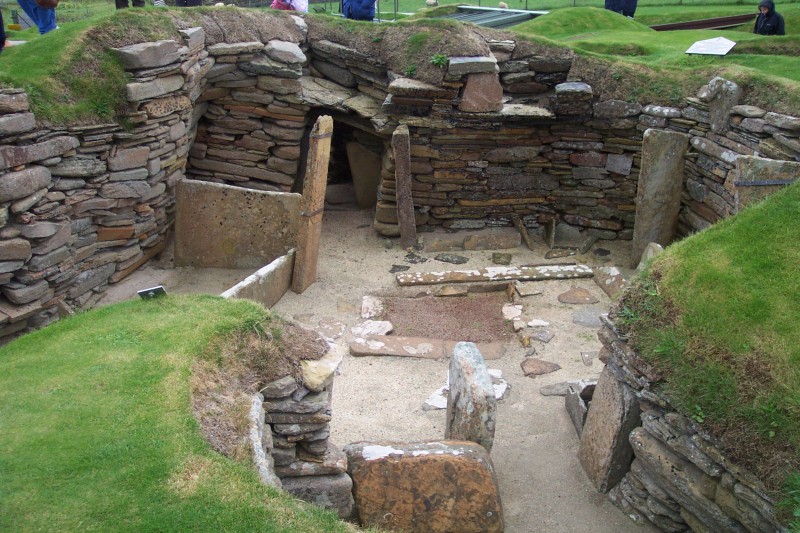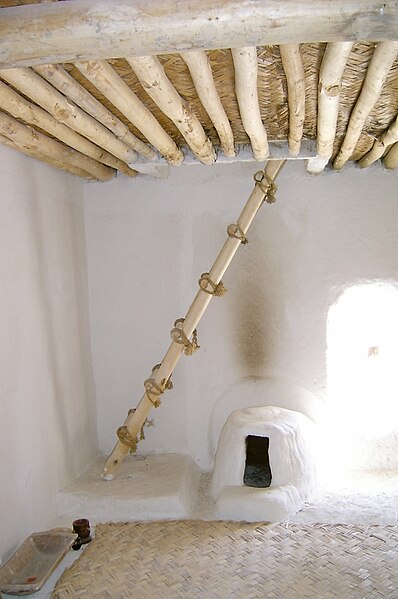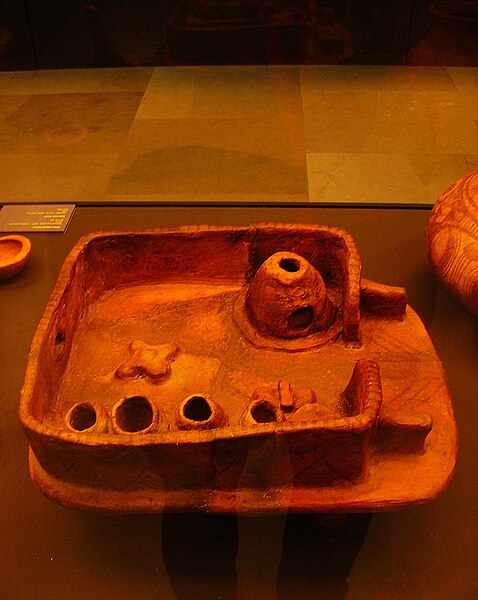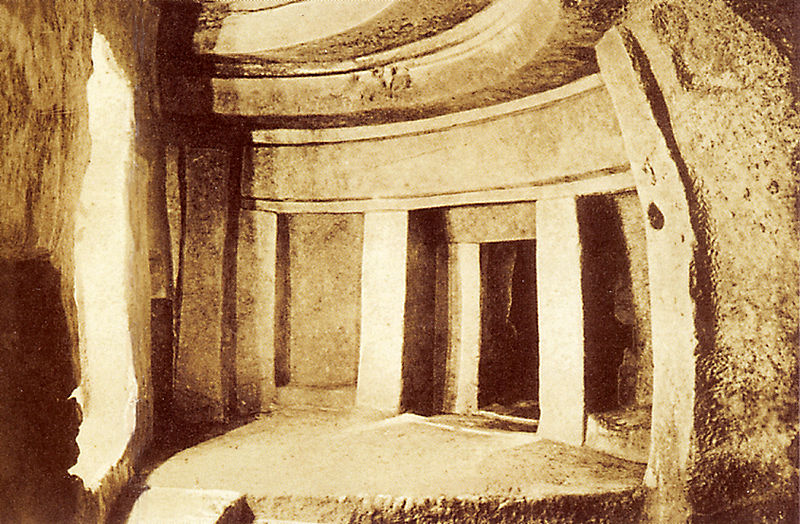Neolithic architecture

신석기 시대 건축은 신석기 시대인 기원전 10,000년에서 기원전 2,000년까지의 주택과 은신처를 아우르는 구축물을 말한다. 서남아시아에서, 신석기 문화는 기원전 10,000년 직후 레반트 지역1에서 처음 나타나고, 거기서부터 동서로 퍼져나간다. 초기 신석기시대 구축물과 건물은 기원전 8,000년 아나톨리아2 남동부, 시리아 및 이라크에서 찾아볼 수 있으며, 농경 사회는 기원전 6,500년 남동부 유럽 그리고 기원전 5,500년경 중부유럽에서 처음으로 나타났고, 가장 초기의 문화 단지로는 스타체보-쾨뢰시-크리스, LBK(리니어밴드케라믹)3, 빈카(Vinča) 정착지 등이 있다.
Neolithic architecture refers to structures encompassing housing and shelter from approximately 10,000 to 2,000 BC, the Neolithic period. In southwest Asia, Neolithic cultures appear soon after 10,000 BC, initially in the Levant (Pre-Pottery Neolithic A and Pre-Pottery Neolithic B) and from there into the east and west. Early Neolithic structures and buildings can be found in southeast Anatolia, Syria, and Iraq by 8,000 BC with agriculture societies first appearing in southeast Europe by 6,500 BC, and central Europe by ca. 5,500 BC (of which the earliest cultural complexes include the Starčevo-Koros (Cris), Linearbandkeramik, and Vinča.
건축의 발전은 신석기 시대(기원전 10,000~2000년)의 중요한 부분으로, 이 기간 동안 인류 역사의 주요 혁신이 일어났다. 예를 들어, 동식물의 가축화는 새로운 경제와 사람과 세계 사이의 새로운 관계, 공동체 규모와 영속성 증가, 물질 문화의 대대적인 발전, 그리고 사람들이 이 공동체에서 함께 살 수 있는 새로운 사회적 및 의식적 해결책으로 이어졌다. 새로운 스타일의 개별 구축물과 이를 결합한 정착촌은 새로운 생활 방식과 경제에 필요한 건물을 제공했으며, 또한 변화의 필수 요소였다.
Architectural advances are an important part of the Neolithic period (10,000-2000 BC), during which some of the major innovations of human history occurred. The domestication of plants and animals, for example, led to both new economics and a new relationship between people and the world, an increase in community size and permanence, a massive development of material culture, and new social and ritual solutions to enable people to live together in these communities. New styles of individual structures and their combination into settlements provided the buildings required for the new lifestyle and economy, and were also an essential element of change.




주택
Housing
레반트, 아나톨리아, 시리아, 메소포타미아 북부 및 중앙아시아의 신석기인들은 진흙 벽돌을 이용해 집과 마을을 건설한 뛰어난 건설인이었다. 차탈회위크(Çatalhöyük; 터키 중앙 아나톨리아 지역의 신석기시대 초기 도시 유적)에서, 집들은 회칠을 하고 인간과 동물의 정교한 장면들로 그려졌다.
The Neolithic people in the Levant, Anatolia, Syria, northern Mesopotamia and central Asia were great builders, utilising mud-brick to construct houses and villages. At Çatalhöyük, houses were plastered and painted with elaborate scenes of humans and animals.
유럽에서, 목골구조, 물매, 초가지붕, 그리고 엮은 욋가지 위에 흙을 발라 마감한 초벽으로 된 신석기 시대 롱하우스는 매우 커서 대가족이 모두 살 수 있었을 것으로 추정된다. 마을은 이러한 집 몇 채로만 구성될 수도 있다.
In Europe, the Neolithic long house with a timber frame, pitched, thatched roof, and walls finished in wattle and daub could be very large, presumably housing a whole extended family. Villages might comprise only a few such houses.
신석기시대의 (말뚝으로 받쳐 지은) 호상(湖上)가옥은 스웨덴(알바스트라 호상가옥)과 알프스 주변 지역에서 발굴되었으며, 상(上)오스트리아에 있는 몬트제 호수와 아터제 호수에서 발견되었다. 페르디난드 켈러( 1800-1881) 같은 초기 고고학자들은 스코틀랜드의 크래너그4처럼 인공섬을 형성했다고 생각했지만, 오늘날에는 대부분의 정착지가 호수 기슭에 위치했으며 나중에 침수됐다는 것이 분명하다. 재건된 호상가옥은 운터울딩엔(독일)과 취리히(스위스)의 야외 박물관에 전시되어 있다.
Neolithic pile dwellings have been excavated in Sweden (Alvastra pile dwelling) and in the circum-Alpine area, with remains being found at the Mondsee and Attersee lakes in Upper Austria. Early archaeologists like Ferdinand Keller thought they formed artificial islands, much like the Scottish crannogs, but today it is clear that the majority of settlements was located on the shores of lakes and were only inundated later on. Reconstructed pile dwellings are shown in open-air museums in Unteruhldingen and Zürich (Pfahlbauland).
루마니아, 몰도바, 우크라이나의 신석기 시대 정착지는 초가지붕 그리고 점토로 덮인 통나무 바닥이 있는 초벽 구조가 포함되었다. 또한 이 시기는 20세기까지 루마니아인과 우크라이나인들이 사용했던 주택 건축의 보르데이 수혈주거(바닥으로 판 굴) 양식이 개발된 때이기도 하다.
In Romania, Moldova, and Ukraine, Neolithic settlements included wattle-and-daub structures with thatched roofs and floors made of logs covered in clay. This is also when the burdei pit-house (below-ground) style of house construction was developed, which was still used by Romanians and Ukrainians until the 20th century.
신석기 시대 정착지와 “도시”는 다음과 같다:
Neolithic settlements and “cities” include:
- 괴베클리 테페(터키), 기원전 9,000년경
- 레반트 지역의 텔 에스-술탄(예리코), 기원전 8,350년경의 신석기 시대로 중석기 시대 나투프 문화에서 비롯되었다.
- 네발르 초리(터키), 기원전 8,000년경
- 차탈회위크(터키), 기원전 7,500년경
- 메르가르(파키스탄), 기원전 7,000년경
- 냅 오브 하워 및 스카라 브레(스코틀랜드 오크니 제도), 기원전 3,500년경
- 쿠쿠테니-트리필리아 문화의 3,000개 이상의 정착지, 일부 인구 최대 15,000명, 기원전 5,400~2,800년까지 오늘날의 루마니아, 몰도바, 우크라이나에서 번성했다.
- Göbekli Tepe in Turkey, ca. 9,000 BC
- Tell es-Sultan (Jericho) in the Levant, Neolithic from around 8,350 BC, arising from the earlier Epipaleolithic Natufian culture
- Nevali Cori in Turkey, ca. 8,000 BC
- Çatalhöyük in Turkey, 7,500 BC
- Mehrgarh in Pakistan, 7,000 BC
- Knap of Howar and Skara Brae, the Orkney Islands, Scotland, from 3,500 BC
- over 3,000 settlements of the Cucuteni-Trypillian culture, some with populations up to 15,000 residents, flourished in present-day Romania, Moldova and Ukraine from 5,400–2,800 BC.
무덤과 제식 기념물
Tombs and ritual monuments



죽은 자를 위한 정교한 무덤도 지어졌다. 이 무덤들은 특히 아일랜드에 많이 있는데, 아직도 수천 기(基)가 현존하고 있다. 영국 제도(諸島)의 신석기인들은 죽은 자를 위한 긴 고분(古墳)과 석실분(石室墳), 둑길 야영지, 헨지5 및 커서스6 기념물을 지었다.
Elaborate tombs for the dead were also built. These tombs are particularly numerous in Ireland, where there are many thousand still in existence. Neolithic people in the British Isles built long barrows and chamber tombs for their dead and causewayed camps, henges and cursus monuments.
거석 건축
Megalithic architecture
유럽과 지중해에서 발견된 거석들 또한 신석기 시대에 세워졌다. 이러한 기념물에는 거석묘(巨石墓), 거석신전 및 기능을 알 수 없는 여러 구조물이 포함된다. 무덤 건축은 일반적으로 원래 묻혀 있던 사람의 유골이 있는지 여부로 쉽게 구분할 수 있으며, 종종 알아볼 수 있는 의도를 가지고 있다. 다른 구축물들은 복합 용도로 사용되었을 수 있으며, 현재는 흔히 종교적, 의례적, 천문학적 혹은 정치적으로 특징지어진다. 오늘날 우리가 익히 알고 있는 다양한 건축 기능의 현대적인 구분이 일부 거석 구축물을 다목적 사회-문화의 중심점으로 생각하기 어렵게 만든다. 그러한 구조물들은 사회-경제적, 이데올로기적, 정치적 기능과 실질적인 심미적 이상을 복합적으로 제공했을 것이다.
Megaliths found in Europe and the Mediterranean were also erected in the Neolithic period. These monuments include megalithic tombs, temples and several structures of unknown function. Tomb architecture is normally easily distinguished by the presence of human remains that had originally been buried, often with recognizable intent. Other structures may have had a mixed use, now often characterised as religious, ritual, astronomical or political. The modern distinction between various architectural functions with which we are familiar today, now makes it difficult for us to think of some megalithic structures as multi-purpose socio-cultural centre points. Such structures would have served a mixture of socio-economic, ideological, political functions and indeed aesthetic ideals.
기원전 3,600년경 현재의 형태로 처음 등장한 몰타섬과 고조섬의 주간티아 신전, 타르시엔 신전, 하자르 임 신전, 므나이드라 신전, 타 하그라트 신전, 스코르바 신전 및 작은 위성 건물들의 거석 구조물은 미학, 위치, 디자인, 엔지니어링이 독립적인 기념물로 융합된, 완전히 발전된 건축의 초기 사례 중 하나다. 신석기 시대의 또 다른 유명한 구조물인 스톤헨지는, 나중에 사르센스톤의 경우 기원전 2,600~2,400년 그리고 블루스톤의 경우 약 기원전 3,000년에 우리가 잘 알고 있는 형태로 변형되었다. 절정기에, 신석기 시대 건축은 지리적 공간을 표시했으며; 내구성이 뛰어난 기념비는 아마도 기억과 추모로 이루어진 과거를 구현한 것이다.
The megalithic structures of Ġgantija, Tarxien, Ħaġar Qim, Mnajdra, Ta’ Ħaġrat, Skorba and smaller satellite buildings on Malta and Gozo, first appearing in their current form around 3600 BC, represent one of the earliest examples of a fully developed architectural statement in which aesthetics, location, design and engineering fused into free-standing monuments. Stonehenge, the other well-known building from the Neolithic would later, 2600 and 2400 BC for the sarsen stones, and perhaps 3000 BC for the blue stones, be transformed into the form that we know so well. At its height Neolithic architecture marked geographic space; their durable monumentality embodied a past, perhaps made up of memories and remembrance.
중부 지중해에에 위치한 몰타 또한 기원전 3,600년경 지하-경험-모방 건축 양식의 본거지가 되었다. 할-사플리에니 지하 신전에서, 몰타 주민들은 일련의 방과 입구를 장식하기 위해 표면의 건축적 요소를 사용하여 지하 매장 단지를 개척했다. 세계에서 처음 발생한 스큐어모피즘으로 일찍부터 알려진 곳은 신석기 시대의 할-사플리에니 지하 신전이다. 이 건축적 장치는 더 큰 거석에서 잘 알려진 용어로 지하 세계의 미학을 규정하는 역할을 했다. 몰타섬과 고조섬에서 지상과 지하 건축은 두 세계를 정의했는데, 나중에 그리스 세계에서 그것들은 하데스의 신화와 현실 세계로 나타나게 된다. 그러므로 몰타에서 우리가 마주치게 되는 신석기시대 건축은 순전히 기능적인 것이 아니라 디자인과 목적에 있어 개념적인 것이었다.
In the Central Mediterranean, Malta also became home of a subterranean skeuomorphised form of architecture around 3600 BC. At the Ħal-Saflieni Hypogeum, the inhabitants of Malta carved out an underground burial complex in which surface architectural elements were used to embellish a series of chambers and entrances. It is at the Neolithic Ħal-Saflieni Hypogeum that the earliest known skeuomorphism first occurred in the world. This architectural device served to define the aesthetics of the underworld in terms that well known in the larger megaliths. On Malta and Gozo, surface and subterranean architecture defined two worlds, which later, in the Greek world, would manifest themselves in the myth of Hades and the world of the living. In Malta, therefore, we encounter Neolithic architecture which is demonstrably not purely functional, but which was conceptual in design and purpose.

기타 구축물
Other structures
독일 중부 라이프치히 인근에서 선형도기문화의 초기 신석기 시대 우물이 발견되었다. 이 구축물은 가장자리에 복잡한 목세공 접합이 있는 목재로 지어졌으며, 기원전 5,200~5,100년 사이에 만들어졌다.
Early Neolithic water wells from the Linear Pottery culture have been found in central Germany near Leipzig. These structures are built in timber with complicated woodworking joints at the edges and are dated between 5,200 and 5,100 BCE.
세계에서 가장 오래된 인공 도로로 알려진 영국의 스위트 트랙 또한 이 시기부터 시작된다.
The world’s oldest known engineered roadway, the Sweet Track in England, also dates from this time.

- 출처 : 「Neolithic architecture」, Wikipedia(en), 2020.11.29.